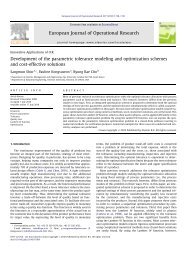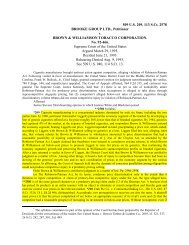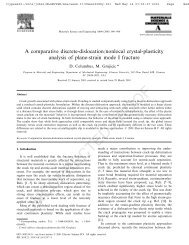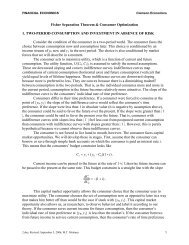a tribute to professor walter shepherd owen - Clemson University
a tribute to professor walter shepherd owen - Clemson University
a tribute to professor walter shepherd owen - Clemson University
Create successful ePaper yourself
Turn your PDF publications into a flip-book with our unique Google optimized e-Paper software.
available during the reverse interface motion. Transformations accompanied by significant<br />
plastic accommodation are not thermo-elastic.<br />
Dislocations may also be generated by the moving interface. In many alloys in which the<br />
transformation is thermo-elastic, the lattice invariant strain is produced by the formation of a<br />
stack of thin, parallel twins with alternating twinning directions. At the interface of such a plate,<br />
there are local accommodation strains which may be elastic when the twins are thin, but plastic if<br />
they are not [16]. When a plate of the latter type shrinks, the moving interface leaves behind<br />
trails of sessile dislocation loops. On reversing the direction of the moving interface, the<br />
interface remains stable and glissile as it moves through the dislocation debris [17]. The density<br />
of dislocations in the matrix increases with each reversal of growth direction until it reaches<br />
some limiting density [18]. Thus, in these alloys, there is local irreversible deformation produced<br />
not by the shape change but by the moving interface.<br />
Taking all these facts in<strong>to</strong> account, Ling and Owen [19,20] classified a transformation as thermoelastic<br />
if the motion of the interface is reversible, even though there may be a significant thermal<br />
hysteresis due <strong>to</strong> a high density of interface generated dislocations in the matrix. They further<br />
identified elastic accommodation of the transformation shape change as the essential condition<br />
for thermo-elastic growth. With this definition, thermo-elastic growth is favored by a small<br />
chemical driving force at the Ms, a small transformation shape strain, and a matrix with a high<br />
flow stress [21].<br />
Most thermo-elastic alloys, such as the inter-metallic β-phase alloys, have these properties. An<br />
exception is a group of ferromagnetic iron alloys, such as ordered Fe3Pt, which have a shape<br />
deformation similar in magnitude <strong>to</strong> that in other ferrous alloys that do not transform thermoelastically.<br />
The chemical driving force in ordered Fe3Pt is also substantially higher than in βphase<br />
alloys. Ling and Owen [19,20] recognized that this, in part, reflects the larger elastic<br />
accommodation strain energy, but also that the absence of soft elastic modes (comparable with<br />
those found in the β-phase alloys), is an additional important reason why the driving force at Ms<br />
is relatively large in Fe3Pt.<br />
Computer Modeling of the Growth of Thermo-elastic Martensite: Ling and Owen [19,20]<br />
developed one of the first computer models of thermo-elastic growth which enabled<br />
determination of the largest plate which can behave thermo-elastically. They were also able <strong>to</strong><br />
calculate the associated strain energy and, thus, the maximum driving force at the Ms. By<br />
calculating the plastic-zone size of a martensite particle in equilibrium at the Ms temperature, the<br />
model was next used <strong>to</strong> assess relative propensity of a given alloy system <strong>to</strong> exhibit thermoelastic<br />
growth.<br />
The model of Ling and Owen [19,20] was a three-dimensional continuum model which<br />
considered contributions of both the shear and the dilatational transformation strains. The first<br />
plate of martensite <strong>to</strong> form at Ms was assumed <strong>to</strong> nucleate within a grain in a polycrystalline<br />
aggregate and <strong>to</strong> grow rapidly in the radial direction, until s<strong>to</strong>pped by a grain boundary or other<br />
barrier. The plate is then assumed <strong>to</strong> thicken in a direction, normal <strong>to</strong> the plane of the thin plate.<br />
The resulting lenticular plate was represented by an oblate spheroid. The matrix and the<br />
martensite were assumed <strong>to</strong> be elastically isotropic, but with different elastic moduli.<br />
The martensite plate was assumed <strong>to</strong> be a coherent particle embedded in an infinite matrix of the<br />
parent phase. The martensitic-transformation induced stresses in the plate and in the matrix were<br />
calculated using Eshelby's model [22]. It was further assumed that plastic flow occurs in a<br />
7

















